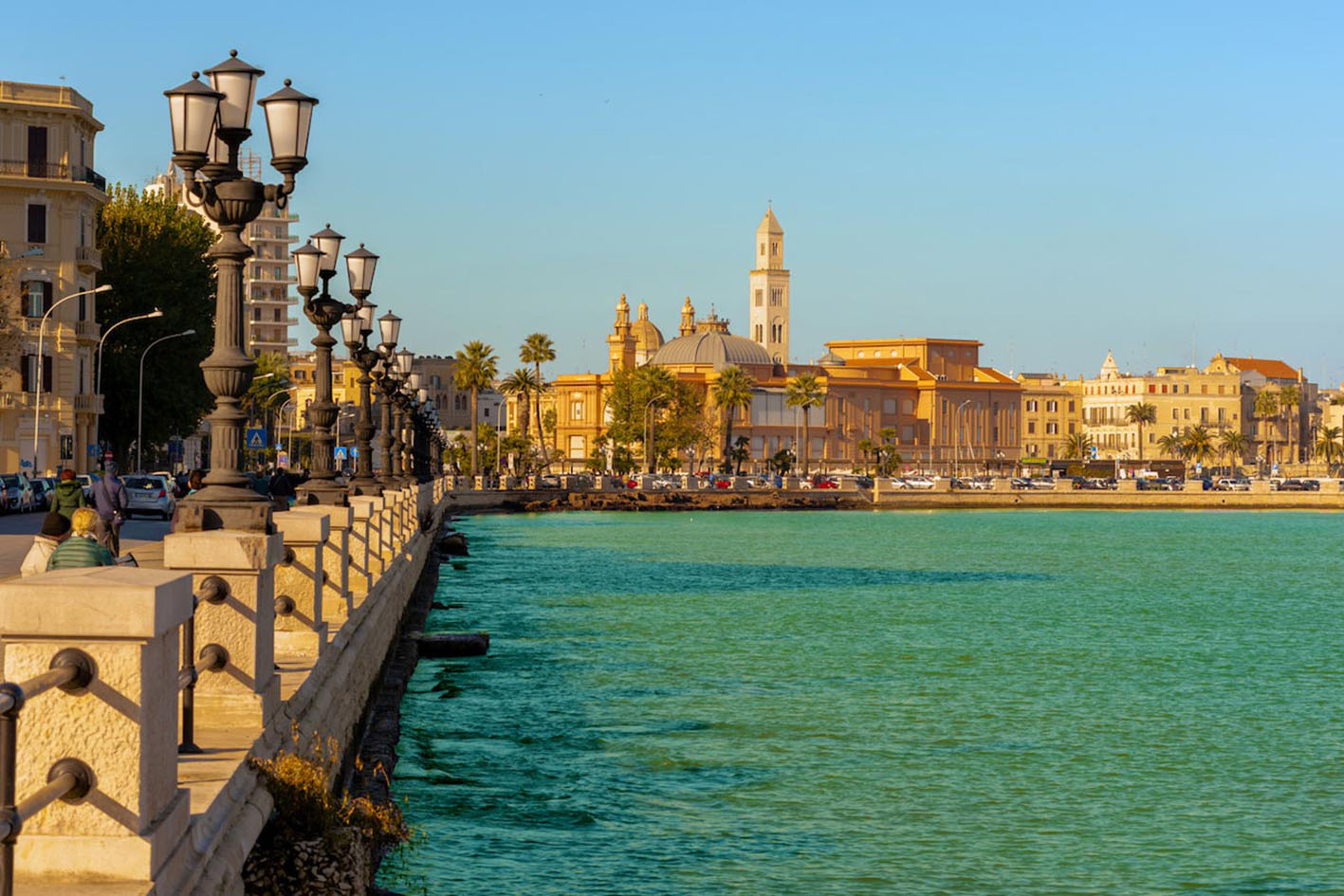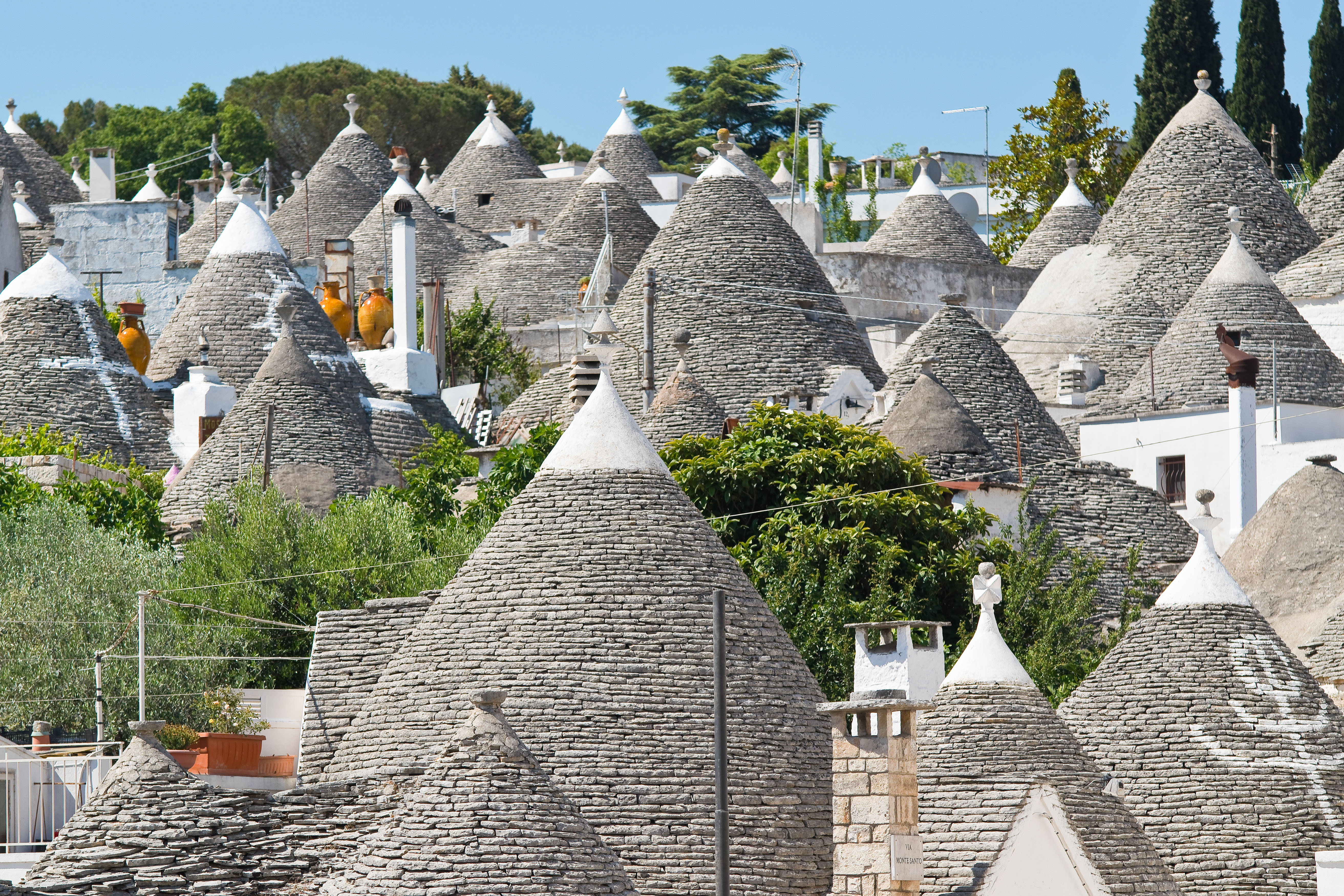
I was watching an episode of ‘Jamie Cooks Italy’ where he travels to various destinations in Italy with his old friend and mentor, Gennaro Contaldo. This week they visited what I think is one of the most magical and unspoilt regions in the whole of Italy, Puglia, a region situated on the heel of the boot in the southern part of the country.
This area is also known as the vegetable garden of Italy because of its fertile soil, ancient farms and warm climate. At one point Jamie was seen driving through the stunning countryside and passing through miles and miles of olive groves. Many of these olive trees were planted in the 18th century by way of an incentive to reduce their taxes. Puglia now produces 40% of Italy’s total olive production. Also the vast array of vegetables grown contributes greatly to Italy’s total production.
Puglia has always been one of the poorer areas of Italy but I think it has has made the people richer for it. It is a much more relaxed way of life here with a strong community spirit where everyone helps each other and family life is very important. Being a traditionally poor region has obviously influenced the local cuisine. It’s about getting the most from very little and where nothing is wasted. They have a name for the cuisine here, Cecina Povera which roughly translates to the kitchen of the poor. The dishes are usually quite simple, using the local produce such as chickpeas, tomatoes, broccoli etc together with the bountiful seafood, creating beautifully fresh and tasty dishes. This is also an area where there have been many influences in the past such as the Greeks, Romans, Turks, French and Spanish who had previously invaded the area so they do use a number of herbs and spices in their dishes and this has also helped define their cuisine.
Home made pasta is also a big thing down here and they have their own particular shapes such as the orecchiette which means little ears. These are particularly useful at capturing those delicious sauces. Jamie does get a lesson from one of the local nonnas but making orecchiette isn’t quite as easy as it looks. Interestingly he was also given a cooking lesson for a local seafood and rice dish which turned out very much like a paella. That was undoubtedly derived from the influence of the Spanish.
The local cheeses also play a big part in their cuisine. Mozzarella is a key ingredient in many dishes along with the Pecorino and an interesting cheese from north Puglia called Caciacavello which is normally ball shaped and is hung up with string.
Then of course there is the wine. Italy is the largest producer of wine in the world and Puglia is arguably the largest producer in Italy. The fertile soil, the limestone and the warm sea breezes create the perfect conditions for producing some really quite desirable wines using grapes that are particular to the region such as Negroamaro, Primitivo and Bombino Nero.
Puglia is surrounded by the Adriatic and Ionion sea and the rugged coastline and sun bleached beaches are boundless. For instance, in the north is a spur of land called the Gargano, an area of outstanding beauty with its stunning coastline, pretty fishing villages and in its forested heart, the Gargano National Park.

Follow the coast south an you come to the thriving port of Bari. This university city is the capital of Puglia and boasts an opera house and beautiful promenades. The city is split into two areas, the old and the new. The ancient town is located to the north where you will find the cathedral of San Sabino built in the 11th century. The more modern part was developed in the 19th century due to the importance and location of this busy port. Bari is also home to one of our original brands, Carbotti. This handcrafted collection has always been very popular with our customers, mainly due to their consistent high quality and beautiful Italian styling.
No-one can visit Puglia without visiting Alberobello with its white washed stone buildings and conical roofs called trullis. In fact this area has hundreds of these iconic stone huts and is a UNESCO world heritage site.

Going a little further south is the hillside city of Ostuni. Standing out like a beacon in the sunshine with its white washed buildings, it’s hard not to fall in love with the place. In fact it was one of the pit stops for Jamie and Gennaro and they were completely spell bound by the place as they walk through the cobbled streets marvelling at the Romanesque and Byzantine architecture.
Go a little further south again and you come to what is affectionately know as the Florence of the south, Lecce. This ancient city with its baroque cathedral, churches and stunning piazzas is one of the few southern cities on the main tourist trail and it’s easy to see why. It can even boast a sunken amphitheatre.
If you’re after a real eye opener on how poverty stricken this region used to be, head towards Matera. This is a city set on a rocky outcrop where most of the dwellings were carved into the rocky mountainside. This city was once the shame of Italy. There was no running water, sanitation and no electricity. The place was rife with disease and the infant mortality rate was extremely high. Eventually in the 1950’s the population were moved out of their cave dwellings to modern accommodation set up in another part of the city. Visiting this place and knowing it’s history is a real leveller and ironically these cave dwellings have been converted to luxury accommodation and boutique hotels for the many visitors it now attracts.
Thank you Jamie and Gennaro for opening my eyes to what will undoubtedly be my next holiday destination.